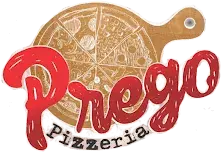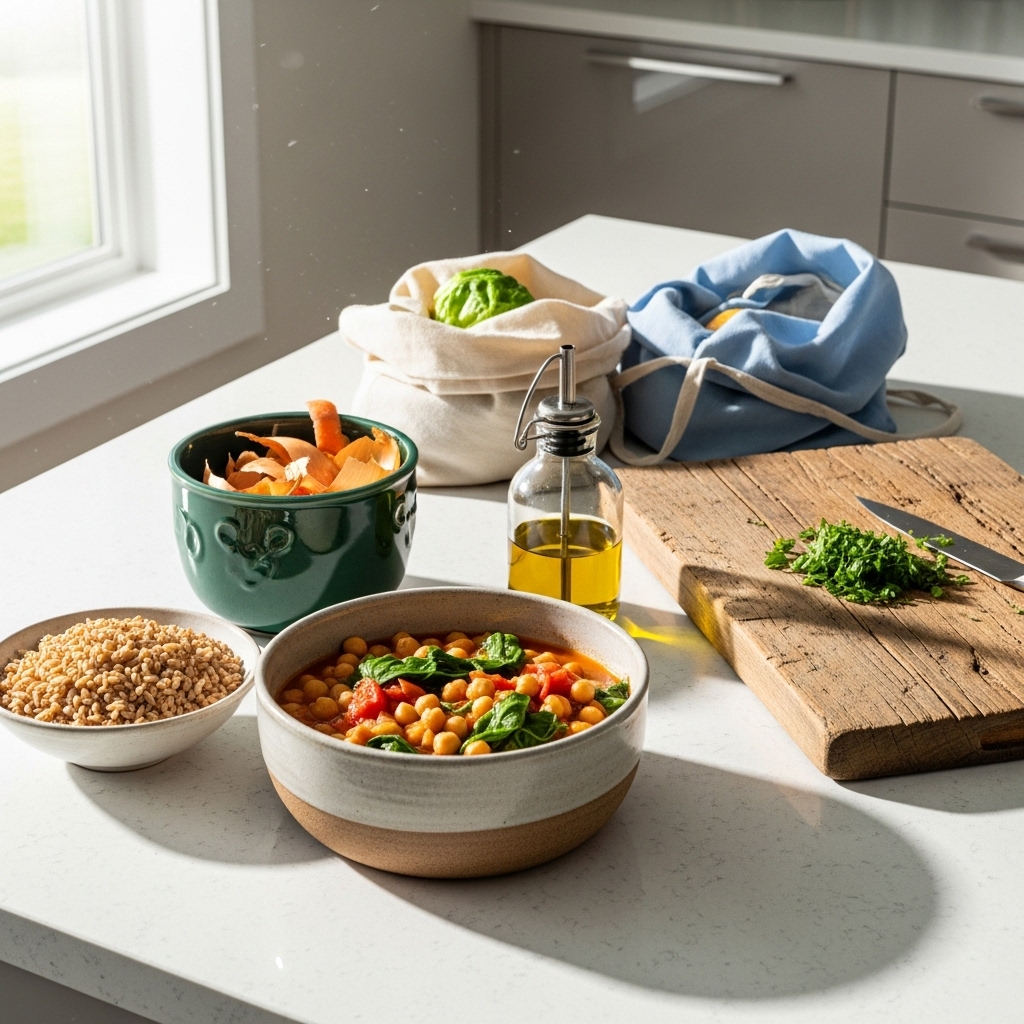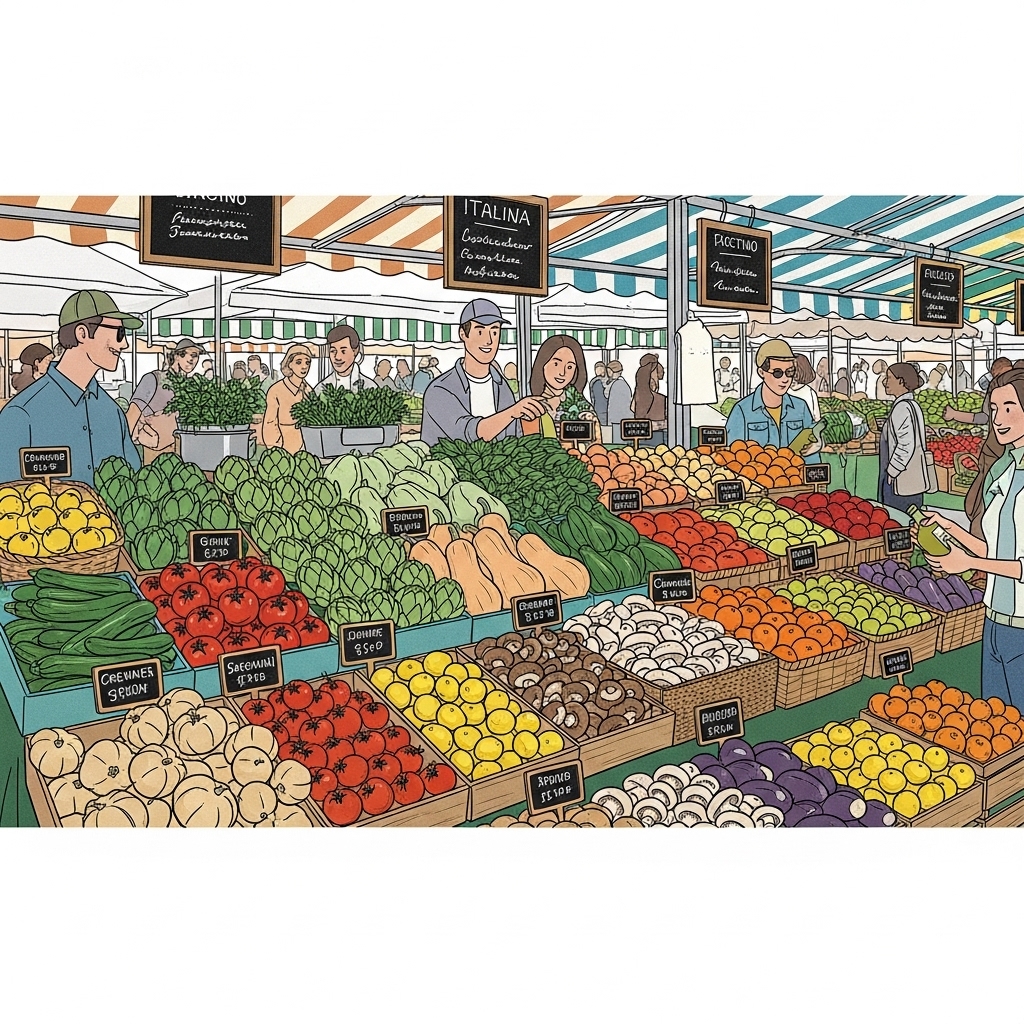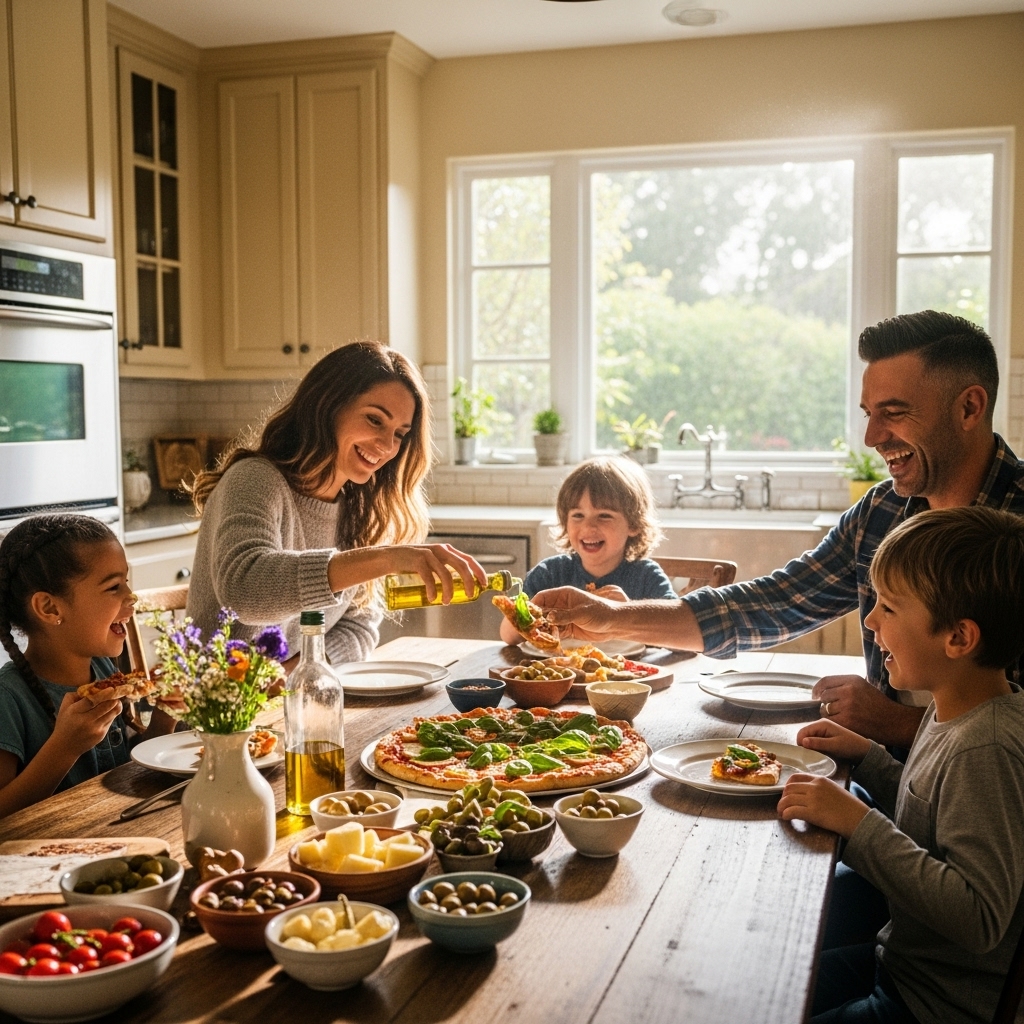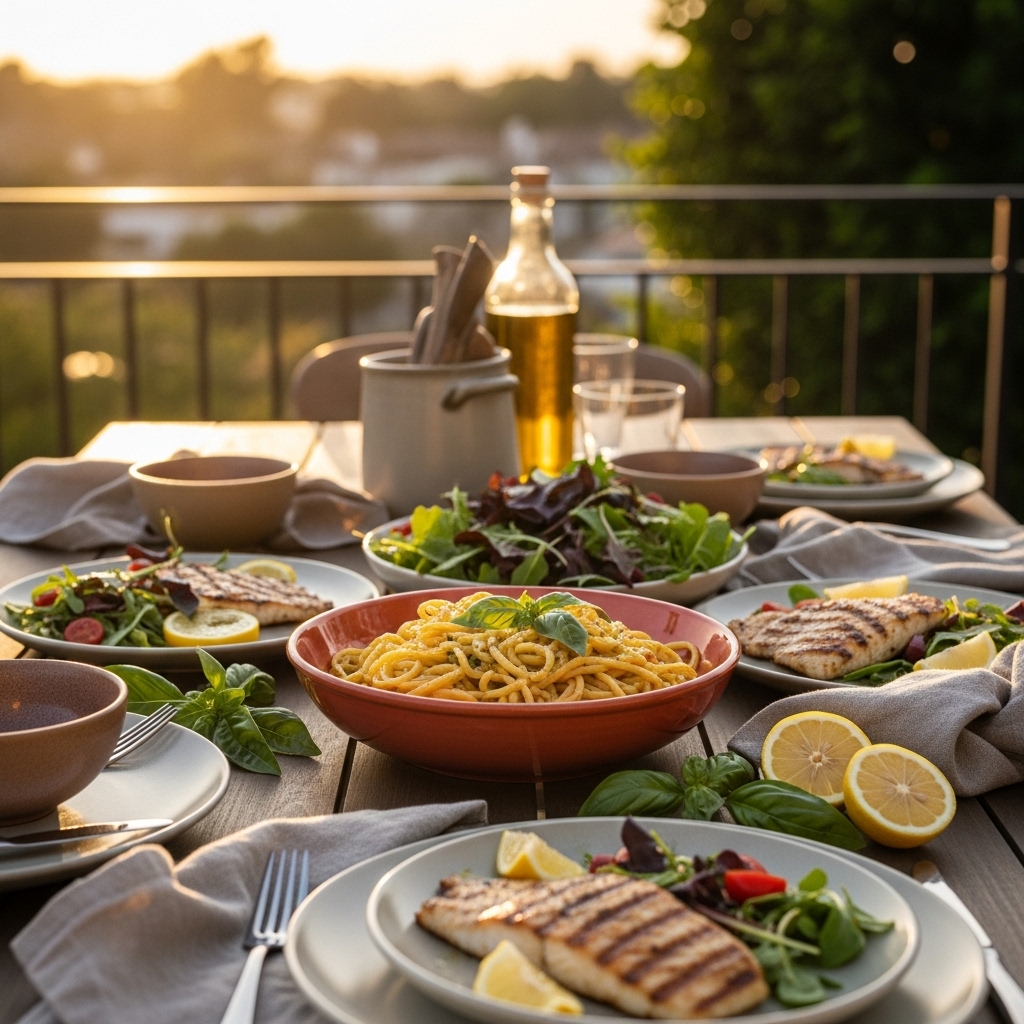In Encino, conversations about food often circle back to the same themes: flavor, family, and responsibility. We’re lucky to live in a neighborhood where year-round sunshine and proximity to farms make great produce almost a given, but that abundance also asks for thoughtful choices. When we sit down to a bowl of pasta or share a pizza along Ventura Boulevard, we’re not just tasting tomatoes and basil—we’re making decisions that ripple outward. Italian cooking, with its emphasis on simplicity and seasonality, gives Encino diners a powerful framework for reducing environmental impact while eating joyfully. It’s one reason so many of us turn to Italian food when we want sustainability to feel natural rather than forced.
The environmental footprint of a meal stretches from farm to fork: how ingredients are grown, how far they travel, how they’re packaged, and what energy is used to cook them. Italian cuisine can excel in each of these areas because it leans on plant-forward plates, seasonal produce, modest portions of animal protein, and thoughtful use of leftovers. In a place like Encino—where heat waves, drought cycles, and green-leaning habits coexist—this approach dovetails with our daily lives.
Seasonality and local sourcing: the first step to lower impact
Choosing seasonal produce reduces the distance food travels and often lowers the energy needed for storage. In Encino, shopping with the season means tomatoes and basil at their best in summer, artichokes and peas in spring, mushrooms and squash in fall, and citrus and brassicas in winter. Italian cooking thrives on this rhythm. A summer pasta al pomodoro tastes better and requires less manipulation when tomatoes are ripe. In winter, citrus lifts salads and seafood with brightness that sidesteps heavier, energy-intensive sauces.
Local sourcing also supports smaller farms that may use more sustainable practices, including soil stewardship and reduced pesticide use. When kitchens commit to nearby suppliers for greens, herbs, and vegetables, they reduce transport emissions and strengthen regional food systems. For Encino diners, this often translates into fresher flavors and a stronger sense of place on the plate.
Plant-forward plates and the protein question
The environmental math around protein is straightforward: dishes centered on plants generally require fewer resources than those centered on meat. Italian cuisine shines here. Beans, lentils, and chickpeas anchor soups and pastas; vegetables claim the spotlight in roasted platters and salads; grains like farro and polenta provide substance without heavy footprint. When animal protein appears, it often does so in modest portions—grilled fish with lemon and herbs, or a small amount of meat used for flavor rather than bulk—helping reduce the overall impact of the meal.
Seafood comes with its own considerations. Choosing species with healthy populations and responsible harvesting methods matters. While every diner should consult current guidance, the broad Italian technique of grilling or stewing fish with bright herbs and citrus makes it easy to pivot to sustainable choices as they’re available. In a neighborhood that values both coastal connections and environmental prudence, this flexibility is a strength.
Olive oil, grains, and the pantry lens
One of the quiet environmental wins in Italian cooking is the reliance on a small, efficient pantry. Olive oil replaces heavy dairy-based sauces, offering flavor and satiety with relatively low resource use compared to cream. Canned tomatoes capture peak-season fruit with long shelf life, reducing waste. Dried pasta, beans, and grains store well and cook into an endless array of meals, allowing kitchens to buy precisely what they’ll use and avoid spoilage.
Whole grains like farro and whole-wheat pasta also contribute to sustainability by encouraging slower, more mindful eating and adding fiber that keeps meals satisfying even in smaller portions. Smaller portions mean less production pressure upstream, less packaging, and often fewer leftovers destined for the trash.
Energy-wise cooking and the Encino climate
Cooking methods matter. Quick sautés, fast pastas, and grilled vegetables use less energy than long bakes, and they suit Encino’s warm climate. In summer, when turning on the oven feels like inviting the heat inside, Italian menus naturally shift toward minimal-cook dishes: ripe tomato salads, lightly cooked sauces, and grilled fish. These habits reduce household energy use and keep homes more comfortable, which is a win for both sustainability and sanity.
The same is true for batch cooking in cooler months. A pot of minestrone or a slow-simmered sauce can anchor several meals, limiting stove use over the week and preventing the need for multiple energy-intensive cooking sessions. Leftovers become planned assets, not accidents.
Packaging, takeout, and smart ordering
Encino’s dining scene includes plenty of nights when takeout makes sense. The environmental question then becomes packaging and food waste. Italian food travels well—pastas, pizzas, and stews maintain integrity—so portions can be right-sized without resorting to excessive packaging. Diners can also consolidate orders to reduce containers and choose dishes that reheat gracefully, maximizing the chance leftovers are eaten rather than discarded.
Restaurants that prioritize recyclable or compostable packaging help, but so does the diner’s mindset. Request utensils only when needed, and consider how a single entrée can be stretched across two meals with the addition of a home salad or extra vegetables. Over time, these choices keep trash bags lighter and dinner just as satisfying.
Water, drought, and ingredient choices
Living in Southern California means being water-aware. Italian cooking’s emphasis on vegetables and grains—especially when sourced seasonally—can reduce the embedded water in a meal. Dishes that lean on beans, tomatoes, and greens generally require less water to produce than meat-heavy alternatives. When meat is part of the menu, smaller portions and occasional frequency help balance enjoyment with responsibility.
Kitchens can also adopt small water-saving habits: salting pasta water carefully so it’s reusable for blanching vegetables, soaking beans thoughtfully, and choosing cooking methods that use less water overall. At home, these practices add up over the months when reservoirs run low and drought warnings become part of the daily conversation.
Food waste: where Italian tradition excels
Perhaps the most impactful shift any household can make is reducing food waste. Italian tradition is rich with recipes that use every scrap: stale bread becomes panzanella or breadcrumbs, herb stems flavor broths, and leftover roasted vegetables slip into frittatas or pastas. In Encino, where busy weeks can make it easy to forget what’s in the fridge, adopting a few of these habits lowers your environmental footprint and saves time. A bowl of minestrone can absorb stray vegetables; a quick tomato sauce can welcome the last of the greens; a pizza can transform odds and ends into a cohesive meal.
Planning helps. Choose one soup and one sauce each week, and build around them. Keep a small, reliable pantry, and let the market determine the fresh components. This approach prevents overbuying and encourages creativity, which is both eco-friendly and deeply satisfying for the cook.
Community impact and Encino’s identity
Eating with the environment in mind isn’t only about carbon and water—it’s also about community health. When Encino diners support local producers and restaurants that champion seasonal, plant-forward menus, the neighborhood’s food ecosystem becomes more resilient. Dollars stay closer to home, jobs feel more secure, and culinary traditions evolve in ways that reflect this place. Italian cooking provides a shared vocabulary for these values. It’s generous, adaptable, and grounded in the idea that less can be more when ingredients are chosen with care.
These choices also build culture. A potluck centered on roasted vegetables, grain salads, and a modest protein showcases how delicious sustainability can be. Kids learn that seasonal eating is normal, not a sacrifice. Neighbors trade recipes for the best tomato salad or the most comforting bean stew, and the result is a food scene that’s both delicious and responsible.
The middle ground: pleasure and principle
Sustainability conversations sometimes slide into extremes, but Italian food lives comfortably in the middle ground. You can love a rich pasta and still make the week mostly about vegetables. You can choose fish one night and beans the next. You can prioritize seasonal produce and still enjoy pantry-friendly staples that reduce waste. The guiding principle is attentiveness—notice what’s in season, notice what portions feel right, notice how leftovers can become tomorrow’s lunch.
In Encino, this attentiveness dovetails with a lifestyle that embraces outdoor time and neighborhood connections. Meals are often shared; produce is often local; and people care about how food choices affect the place they call home. With that foundation, Italian cooking becomes a gentle nudge toward sustainability that feels intuitive rather than forced.
Practical moves Encino diners can make
Start small and build. Make vegetables the core of your plate, and choose protein to support them. When ordering out, ask yourself which dishes will reheat well and be eaten fully. At the market, buy less but more often, letting ripeness guide quantity. Keep a container for vegetable trimmings to turn into broth at the end of the week. Save herb stems for stews, and toast stale bread into breadcrumbs for pasta. These moves require minutes, not hours, and they reshape your kitchen’s environmental profile.
Consider energy use, too. In summer, prioritize no-cook or quick-cook meals. In winter, batch-cook soups and sauces. If you grill, maximize the heat by cooking vegetables alongside proteins, and plan to use leftovers in salads and grain bowls. Over time, these small efficiencies add up in both comfort and sustainability.
FAQ
Q: Is Italian food really more sustainable than other cuisines? A: It isn’t a competition, but Italian cooking’s reliance on seasonal vegetables, olive oil, grains, and modest protein portions often aligns well with sustainability goals. The cuisine’s traditions around leftovers and simple pantries also reduce waste.
Q: How can I reduce takeout packaging waste? A: Consolidate orders, skip disposable utensils and extras you don’t need, and choose dishes that reheat well so leftovers don’t go to waste. Reuse containers when possible.
Q: What proteins are the best choices for lower impact? A: Beans, lentils, and chickpeas are excellent. When choosing animal protein, opt for smaller portions and consider sustainable seafood when available, adjusting selections as guidance evolves.
Q: Does seasonal eating really make a difference? A: Yes. In-season produce typically requires fewer inputs and less storage energy, and it tastes better, which allows for simpler preparations and less waste.
Q: Any tips for cooking in Encino’s summer heat? A: Focus on raw or lightly cooked dishes: tomato salads, grilled vegetables, and quick pastas. These methods use less energy and keep your home cooler.
Q: How do I keep from overbuying produce? A: Shop with flexibility. Choose what looks best and enough for a few days, then plan around it. A small, steady pantry lets you pivot and prevents waste.
Q: Can pizza fit into a sustainable approach? A: Certainly. Opt for a thin crust, plenty of vegetables, and moderate cheese. Use leftovers as lunch the next day, reducing waste and maximizing energy spent on cooking.
Encino’s best meals manage something rare: they taste like joy and feel like stewardship. When your dinner celebrates peak produce, leans on plants, and makes smart use of energy and leftovers, you’re aligning with both palate and planet. If tonight calls for convenience with a conscience, let a neighborhood kitchen that shares these values do the cooking. Bring sustainability to the table with vibrant, seasonally minded Italian food and feel good about every bite.
